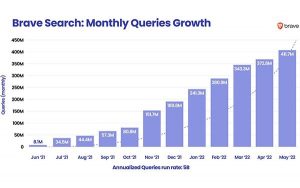Eco-Friendly Fleet Maintenance Trends and Strategies

As the world becomes increasingly aware of the impact of climate change, many businesses are seeking ways to mitigate their carbon footprint and embrace more sustainable practices. In the transportation industry, fleet maintenance is a key area where businesses can make significant strides in reducing their environmental impact.
The Big Issues With Today’s Fleet Maintenance
There are several environmental issues associated with today’s fleet maintenance practices. Here are some of the biggest:
Greenhouse Gas Emissions
Fleet vehicles are a significant source of greenhouse gas emissions, contributing to climate change. The emissions from fuel combustion and the use of heavy-duty vehicles can have negative impacts on air quality, water quality, and human health.
Hazardous Waste Disposal
Many fleet maintenance activities generate hazardous waste, such as used oil, solvents, and other chemicals. If not disposed of properly, these can contaminate soil and water, posing a risk to human health and the environment.
Resource Consumption
Fleet maintenance requires significant resources, including energy, water, and raw materials. The extraction and processing of these resources can have negative impacts on the environment, including habitat destruction, deforestation, and water pollution.
Noise Pollution
Fleet maintenance activities can be noisy, especially in urban areas. This can have negative impacts on wildlife and human health, contributing to stress and hearing damage.
Land Use and Habitat Destruction
The construction and maintenance of fleet facilities, such as maintenance yards and parking lots, can require significant amounts of land. This can lead to habitat destruction and loss of biodiversity.
Overall, fleet maintenance has significant environmental impacts, and addressing these issues will require a comprehensive approach that includes the adoption of sustainable practices, the use of alternative fuels and technologies, and the implementation of environmentally responsible waste management practices.
7 Eco-Friendly Fleet Maintenance Tips
Aligning a company’s fleet maintenance approach with larger green initiatives and eco-friendly mission statements has never been more practical. Here are several helpful tips and strategies to get you started:
1. Switch to Alternative Fuels
One of the most effective ways to make fleet maintenance more eco-friendly is to switch to alternative fuels. Traditional gasoline and diesel-powered vehicles produce a significant amount of greenhouse gas emissions. Alternative fuels, like electricity, biofuels, and even hydrogen, produce fewer emissions and can help reduce a company’s carbon footprint.
Electric vehicles (EVs) are becoming increasingly popular as a sustainable transportation option. EVs produce zero emissions and are typically much cheaper to maintain than traditional vehicles. Hydrogen fuel cell vehicles are also an option, producing only water as a byproduct. Biofuels, which are made from renewable sources like corn and soybeans, can also be used in some vehicles.
2. Use Sustainable Products and Materials
In addition to alternative fuels, businesses can also make fleet maintenance more eco-friendly by using sustainable products and materials. Here are some examples:
Biodegradable cleaning products: Traditional cleaning products can contain chemicals that can be harmful to the environment. Biodegradable cleaning products are a more sustainable alternative as they are made from natural, non-toxic ingredients that break down quickly and safely.
Recycled materials: Using recycled materials, such as oil and tires, can help reduce waste and conserve natural resources. Recycled oil can be re-refined and used again, while recycled tires can be turned into rubberized asphalt, which can be used to pave roads.
Eco-friendly lubricants and fluids: Using eco-friendly lubricants and fluids, such as biodegradable hydraulic fluids and biodegradable grease, can help reduce pollution and protect the environment.
Sustainable packaging: When purchasing products and materials for your fleet maintenance, look for sustainable packaging options, such as products that are shipped in recyclable or biodegradable packaging.
By using sustainable products and materials in fleet maintenance, you can help reduce your environmental footprint and promote sustainability.
3. Conduct Regular Preventive Maintenance
Fleet maintenance software can be a powerful tool for managing preventive maintenance as part of a green fleet management strategy. Here are some steps to help you use fleet maintenance software to perform preventative maintenance:
Set up a preventative maintenance schedule: The first step is to set up a maintenance schedule in your fleet maintenance software. This schedule should include regular maintenance tasks such as oil changes, tire rotations, and other routine maintenance tasks that will help keep your vehicles running efficiently and reduce emissions.
Track vehicle usage: Your fleet maintenance software should be able to track vehicle usage, including mileage, hours of operation, and other relevant data. This information can help you schedule maintenance tasks based on actual use rather than just time intervals, which can help reduce unnecessary maintenance and waste.
Use eco-friendly parts and materials: When performing preventive maintenance, make sure to use eco-friendly parts and materials whenever possible. This can include using recycled oil, eco-friendly tires, and other environmentally friendly products.
Monitor fuel consumption: Your fleet maintenance software should also be able to track fuel consumption for each vehicle in your fleet. By monitoring fuel consumption, you can identify inefficiencies and make adjustments to improve fuel economy, which can help reduce emissions.
Analyze data and adjust your strategy: Finally, use the data collected by your fleet maintenance software to analyze your fleet’s performance and adjust your strategy as needed. For example, if certain vehicles are consistently underperforming or require more frequent maintenance, consider replacing them with more fuel-efficient models.
The good news is that implementing fleet management software into your company’s strategy isn’t nearly as challenging or intensive as you might think. Thanks to artificial intelligence and machine learning, the upfront setup is much faster and more efficient than you may realize. This allows you to get up and running quickly.
4. Implement More Efficient Routing
Efficient routing is another strategy for making fleet maintenance more sustainable. By optimizing routes, businesses can reduce the amount of fuel their vehicles consume and the emissions they produce. This not only helps the environment but can also save the company money on fuel costs.
GPS and fleet management software can help companies optimize their routes and reduce fuel consumption. These tools can provide real-time data on traffic patterns, road closures, and weather conditions, allowing businesses to make informed decisions about their routes.
5. Promote Better Driver Education
Another important aspect of eco-friendly fleet maintenance is promoting driver education. Drivers who are trained in eco-friendly driving techniques can help reduce fuel consumption and emissions. This includes techniques such as reducing idling time, avoiding sudden accelerations and braking, and maintaining a steady speed.
In addition to driver education, businesses can also encourage their drivers to adopt sustainable habits, such as carpooling and using public transportation when possible. This not only reduces the company’s carbon footprint but can also save employees money on commuting costs.
6. Use Telematics Technology
Telematics technology refers to the use of wireless communication systems and GPS technology to transmit data from vehicles to a remote location. This technology allows businesses to track and monitor the performance of their fleet vehicles, including fuel consumption, emissions, speed, and location.
By collecting this data, telematics technology can help businesses optimize their fleet operations to make them more energy-efficient and green. Here are some of the ways that telematics technology can be used to improve fleet sustainability:
Route Optimization: Telematics systems can provide real-time traffic updates, road closures, and weather conditions to help businesses optimize their vehicle routes. By choosing the most efficient route, fleet managers can reduce fuel consumption and emissions while ensuring on-time deliveries.
Fuel Efficiency Monitoring: Telematics technology can track fuel consumption in real-time, giving fleet managers insights into how their vehicles are performing. By identifying patterns of inefficient driving or idling, businesses can take steps to reduce fuel consumption and emissions.
Maintenance Alerts: Telematics technology can also alert businesses when a vehicle is due for maintenance or repairs. By staying on top of maintenance, businesses can ensure that their vehicles are running at peak efficiency.
Driver Behavior Monitoring: Telematics technology can monitor driver behavior, including acceleration, braking, and speed. By identifying patterns of inefficient driving, businesses can provide coaching and training to drivers to help them improve their driving habits.
7. Reduce Vehicle Weight
Reducing the weight of fleet vehicles can also make maintenance more eco-friendly. The heavier a vehicle is, the more fuel it requires to move, which means it will produce more emissions. By reducing the weight of their vehicles, companies can reduce the amount of fuel they consume and the emissions they produce.
This can be achieved by removing unnecessary equipment and cargo from the vehicles, as well as using lightweight materials for vehicle maintenance. For example, aluminum wheels and carbon fiber parts can be used to reduce the weight of the vehicle.
Turn Your Fleet Green
Implementing eco-friendly fleet maintenance practices not only benefits the environment. It can also help businesses save money in the long run. By reducing fuel consumption and emissions, companies can lower their operating costs and improve their reputation as a sustainable business.
Use the tips highlighted above to reorient the way your business approaches fleet maintenance in 2023 and beyond.
Image Credit: by Lê Minh; Pexels; Thanks!
The post Eco-Friendly Fleet Maintenance Trends and Strategies appeared first on ReadWrite.
(11)
Report Post





